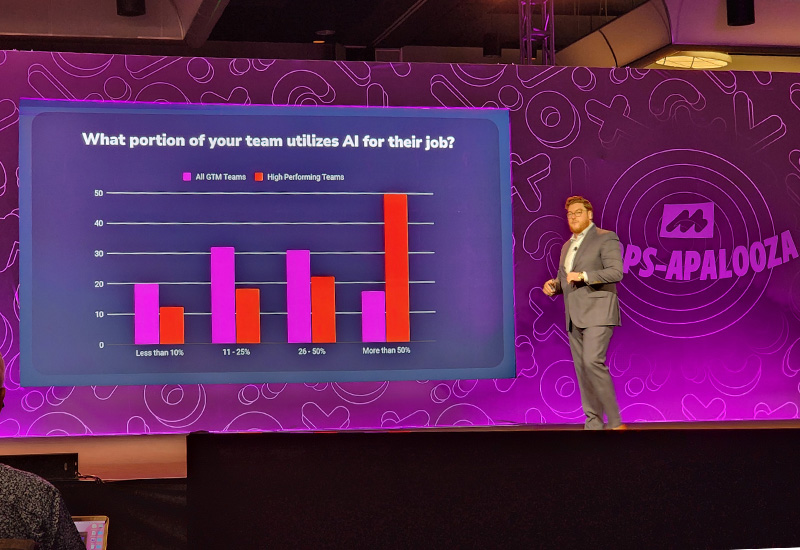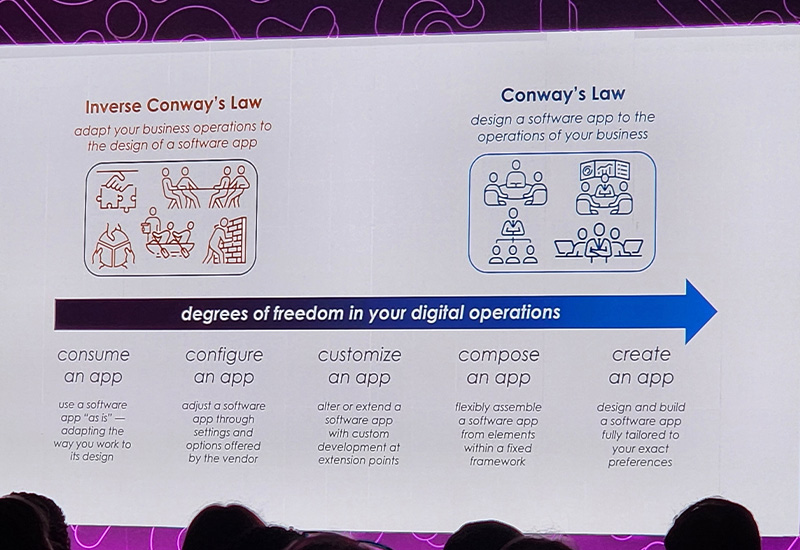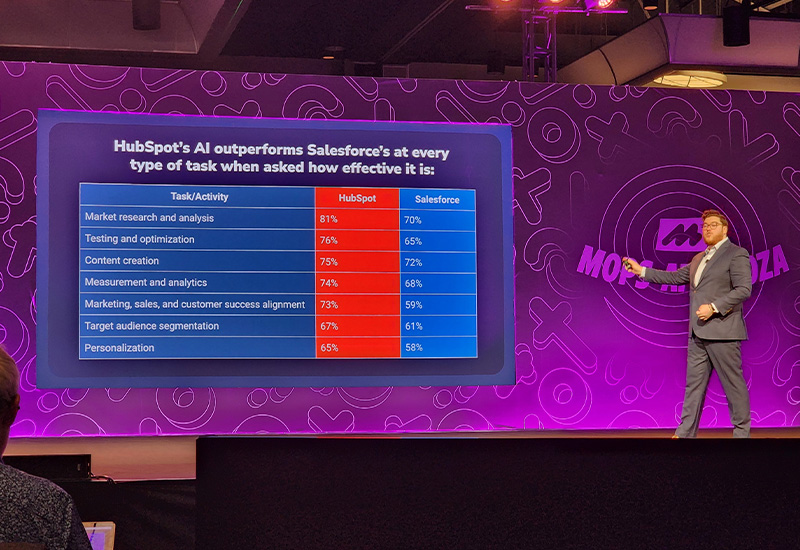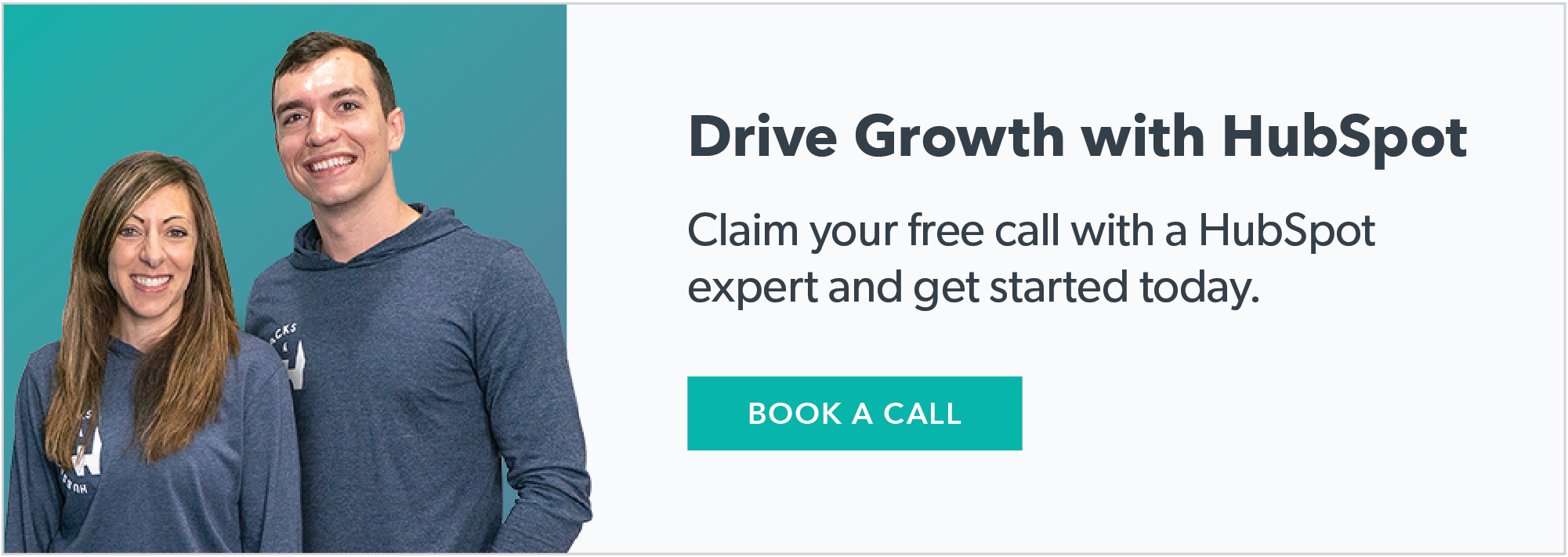Table of Contents
For a few days this fall, the most magical place in Anaheim wasn’t at Disneyland. It was across the street at the inaugural MOps-Apalooza conference, where a few hundred marketing operations professionals came together for an event that can only be described as magical.
MOps-Apalooza was a rare opportunity to dive deep into trends, best practices, real experiences, and emerging solutions in marketing operations. Many attendees I spoke with agree that it competed for the best conference they’ve been to in a very long time due to the sheer number of actionable insights and valuable connections we all walked away with.
Summarizing top takeaways in a single article was no easy task, but here’s my shot at it:
Marketing operations must speak the language of the C-Suite.
The world of marketing operations is often focused on sophisticated technology and detailed metrics. Someone from outside the field would’ve quickly gotten lost in many of the sessions at MOps-Apalooza, where speakers rattled off acronyms like they were singing the ABCs.
Things like BDRs, MQLs, UTMs, CDPs, and ETL all mean something to everyone at that conference, but they don’t mean much to everyone else. That’s why it was great to hear so many conversations about the need to translate things for business leaders by dropping the “geek-speak” and tying our work to the higher-level business objectives.
For example, in their talk on this topic, David Alexander of Everbridge and Jessica Kao of Cloudflare recommended that rather than saying something like: “we launched a UTM generator,” say “we’re working to better understand how well our paid media is working and which campaigns are driving the most results.”
AI isn’t just some distant future technology to ponder.
I heard people talking about how they’re using AI all throughout the conference. People talked about using AI for things like creating Excel formulas to clean up data, building out automations in Zapier, getting help with writing code, and more. While these use cases may pale into comparison with what AI promises in the future, there were two things I thought were interesting about them.
First, most people are already thinking about these use cases as just normal parts of their job – the novelty is already wearing off. Second, there is a clear correlation between a team’s performance and their use of AI according to the research that Connor Jeffers of Aptitude 8 and Hapily shared during his talk.

AI is already here, already being used, and already creating a measurable impact. If you’re still waiting to experiment with it, the time to start is now.
It’s all about the data.
The focus on data isn’t new in marketing operations, but it still dominates the conversation.
Many articles could be written about this topic alone, but I’ll sum it up with this: the goal is high-quality, complete data shared seamlessly across technologies and functional teams. That goal is fully realized by very few organizations, but the ones growing quickly are highly focused on getting as close as they can.
Build or buy? How about compose.
In his opening keynote, Scott Brinker, VP of Platform Ecosystem at HubSpot and Editor at chiefmartec.com, discussed what he sees effective companies doing with their tech stacks. Rather than the age-old binary of whether you should build buy software applications or build them, he shared a continuum of choices between consume (buy) and create (build).

Now more than ever, organizations have an opportunity to compose an app, or “flexibly assemble a software app from elements within a fixed framework.” This often involves combining multiple commercial apps and customizing them in unique ways to fulfill the unique needs of your organization.
This composability of software allows companies to aggregate wide sets of data and functionality through a single source, and no longer forces them to choose between buying software they have to adapt to or building software that’s expensive to create and maintain.
Tools, tools everywhere but not a fully-implemented one in sight.
If I had a dollar for every time I heard someone at MOps-Apalooza say something about companies buying software that they never fully implemented, I think my ticket for next year’s conference would be paid for.
This can happen for a wide number of reasons, but the two most common seem to be:
- Shiny object syndrome. Someone or some team gets enamored by the prospects of a new tool, but the next exciting tool comes along before they ever really gained the full benefits of the last one.
- Optimism & underestimation. Companies are often overly optimistic about how quick and easy a new tool can be implemented and underestimate the resources that will be required to stand it up, integrate it with existing tools, train users, and all the other work required to fully utilize it.
The takeaway for me here is that many companies are likely already paying for functionality that could help them improve important metrics. If you’re looking to optimize or improve, it’s worth taking a look at existing tools that may be currently underutilized before investing in something new.
Change is constant, change management is key.
The pace of change in marketing operations is insane right now across the board: privacy regulations, economic conditions, marketing technology, and more. Take just marketing technology alone. The 2023 MartechMap by chiefmartec.com includes over 11,000 tools, an 11% increase over 2022. And with AI taking 2023 by storm, we’ve likely already seen a significant increase since this year’s MartechMap was compiled.
With all this change, it’s critical that companies get change management right. That’s no easy task, but Chloe Washington, Chief of Staff to the CMO at HubSpot, had some great pointers in her talk on the subject:
- Document, document, document. Include what’s changing, why, and how will it affect people, plus an FAQ section.
- Go on a “roadshow” throughout your company to gain buy in, understand competing priorities, and gather reasons for resistance.
- Take a ripple-effect approach to rolling out change – start at the top and work down.
- Determine and engage stakeholders and allies early and often.
- Don’t assume people will know or understand their involvement – identify key players and make sure they’re informed about their role.
- Do not run from opposition, face it head on.
- Create a flexible timeline and change management plan.
While all this is great advice, my favorite quote from Chloe was, “change management is not just about the process, it’s about the people.”
How HubSpot Fits In
It wouldn’t be a Simple Strat article if I didn’t tie all this back to what it means for companies using HubSpot. Overall, I left feeling great about the fact that HubSpot is the tool we decided to focus on at Simple Strat.
HubSpot is already killing it with AI.
HubSpot has introduced a huge swath of AI features this year. From ChatSpot to AI content tools and more, there are increasingly few places in HubSpot where you can’t interact with AI in some way. More importantly, these aren’t just novelty features. In the research Connor Jeffers presented, users stated that HubSpot outperforms Salesforce at every type of AI-assisted task when asked how effective it was.

HubSpot is packed with tools to keep your data clean.
HubSpot is making it easier than ever to keep your data clean, and continuously introduces new features to do so. Some of my favorite HubSpot features for maintaining data quality include:
HubSpot makes it easy to see data across functions.
One of my favorite things about HubSpot is that it provides a robust suite of tools for marketing, sales, and customer service that all live on top of a central CRM database. All the data about how contacts and companies interact with your marketing assets, engage with your sales team, and get support from your customer success team lives in one place.
This means reporting across the buyer’s journey much easier and it’s a piece of cake for a salesperson to see exactly why a lead was created, or for a customer support rep to see details about sales conversations and what the customer has purchased.
And if you have more complex tech stack, HubSpot is making it easier to share your data across other tools too. Send and receive data through web hooks using Operations Hub, connect to other tools through one of over 1,000 native integrations or through HubSpot’s API, and connect to a Snowflake cloud data warehouse natively.
HubSpot is increasingly more composable.
I don’t think it’s a coincidence that the speaker discussing the idea of application composability is the VP of Platform Ecosystem at HubSpot. For most of HubSpot’s history, what you bought was what you got. There was little room to customize or extend it, but that’s changed drastically and continues to do so.
Just look at a few of the many things HubSpot has done over the last few years to make it easier to “flexibly assemble” tools for the unique solution your business needs:
HubSpot is far easier to implement than most.
One way to ensure that you get all the benefits from the technology your purchase is to make sure you purchase technology that’s easy to implement. I won’t pretend that every company on HubSpot takes full advantage of the platform, but I do know that HubSpot is far easier to implement than most of the tools out there.
Since it’s easier to use, it’s faster to set up and easier to train users on. They also offer outstanding support through their free HubSpot Academy, free customer support, and investment in an ecosystem of partners like Simple Strat that are trained and equipped to help companies maximize their results from the platform.
I owe a huge thank-you to the team at MarketingOps.com for putting together this magical event, and to all the amazing speakers and friends new and old willing to share their insights with me. I can’t wait for next year!


